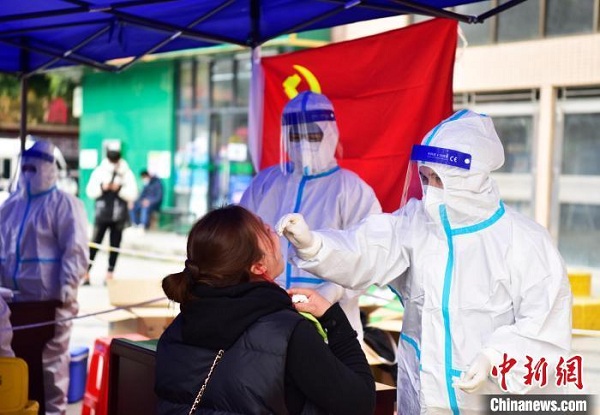Virus on rise in western Guangxi city

A medical worker takes a swab sample from a citizen for nucleic acid test at a testing site in Baise city's Debao county, South China's Guangxi Zhuang autonomous region, Feb 6, 2022. [Photo/chinanews.com.cn]
Baise city in the Guangxi Zhuang autonomous region is racing against the clock to curb the spread of the coronavirus and minimize the risk of COVID-19 as the number of patients in the city continued to grow on Tuesday.
According to the regional Health Commission on Wednesday, Guangxi reported a total of 72 new locally transmitted confirmed cases on Tuesday, bringing the region's total number of patients to 180, plus two asymptomatic carriers, in the outbreak that started on Feb 4.
All the confirmed cases were found in Baise, a statement released by the commission said. The number of patients diagnosed in Debao county alone, the most in the region, surpassed 100 on Tuesday, it said.
Huang Zaibo, director of the Baise health commission, said the city will introduce stricter measures to control the outbreak.
Baise will continue its efforts to implement "no entry, no exit" measures throughout the city, placing all residents in under home quarantine and further expanding testing and screening, Huang said.
He Qinghua, an official with the National Health Commission's Bureau of Disease Prevention and Control, said the central government has sent working groups to Guangxi to help fight the virus.
"The outbreak in Baise is in a rapid upward stage, and the risk of further spread is relatively high," He said, adding that the spread from Baise to Nanning and Guangzhou, Guangdong province, involved many connections before being controlled, so there's a clear risk of spillover outside Baise.
Yang Chunting, director of Guangxi's Bureau of Commerce, said the flow of daily necessities to Baise is adequate.
The city, located in the western part of Guangxi and bordering Vietnam, has a population of more than 3.57 million. It is a front-line city for cooperation with the Association of Southeast Asian Nations.














